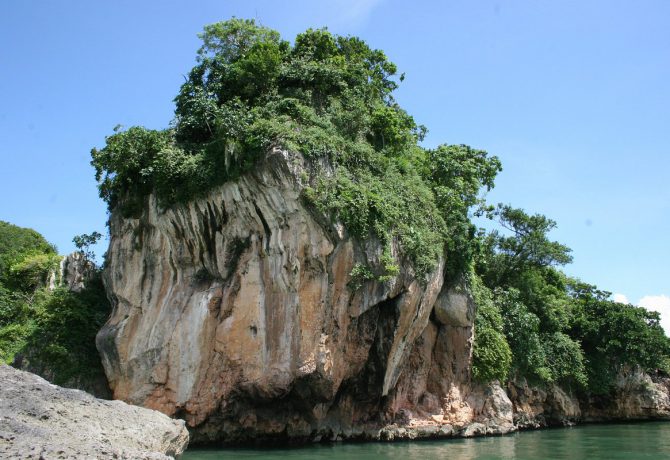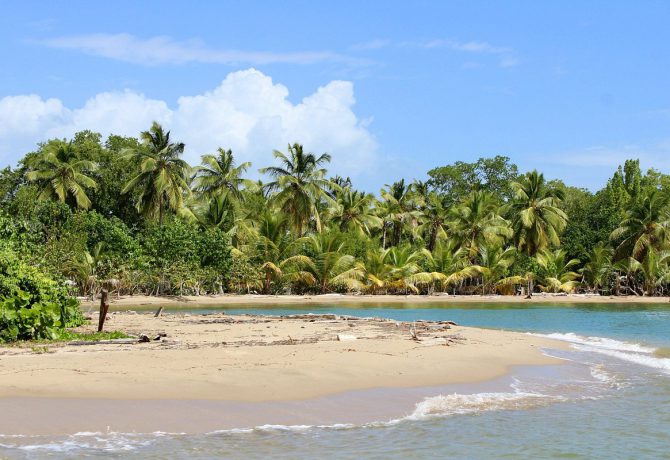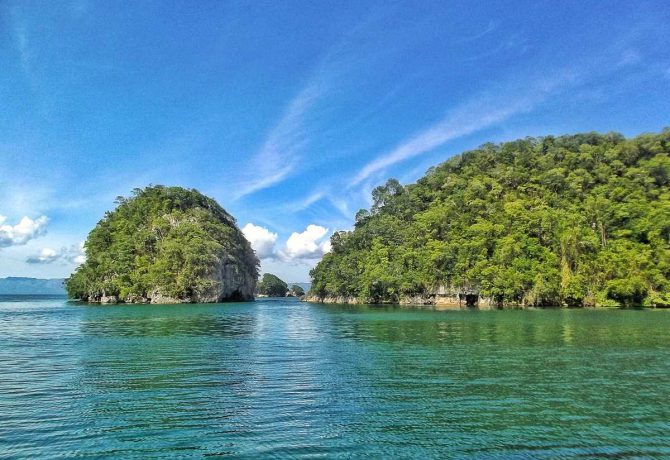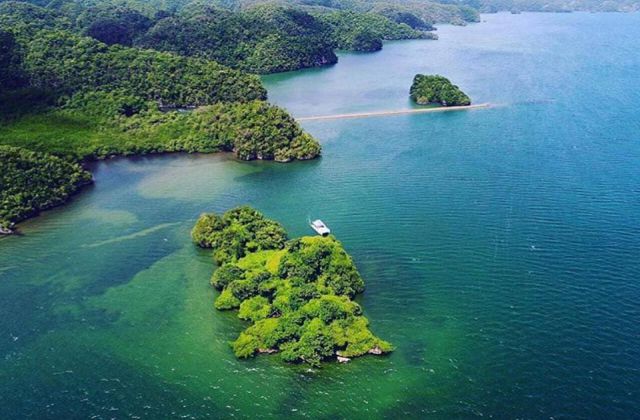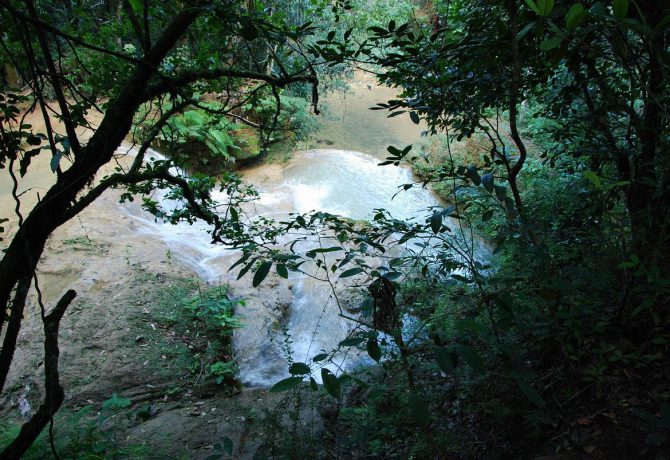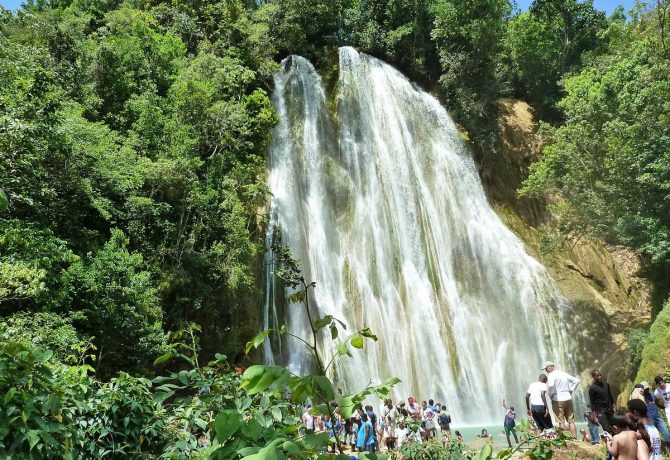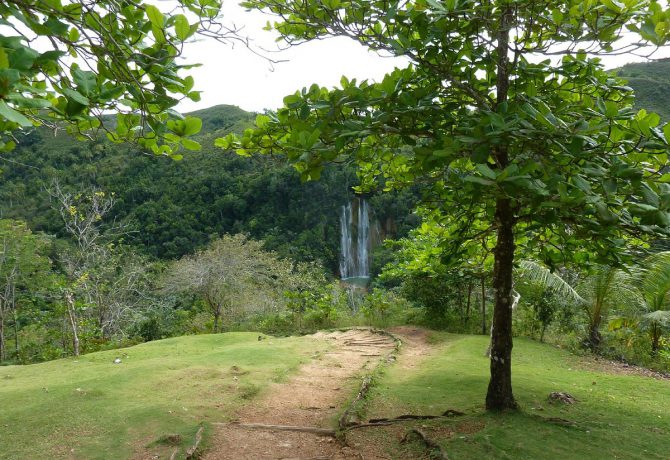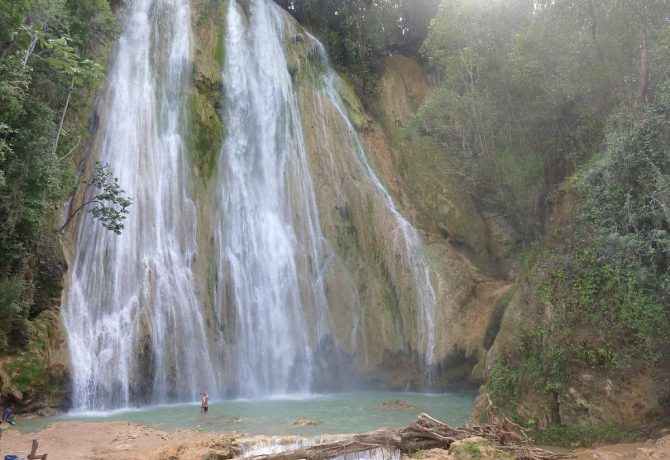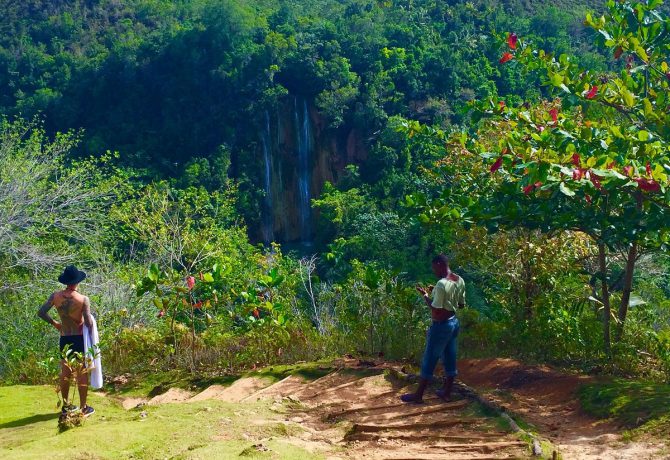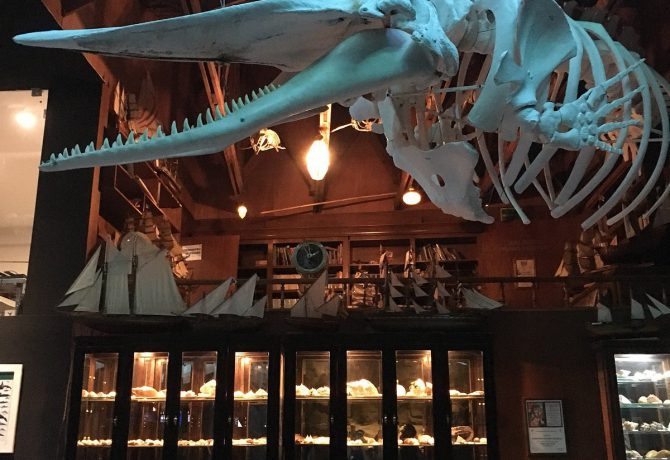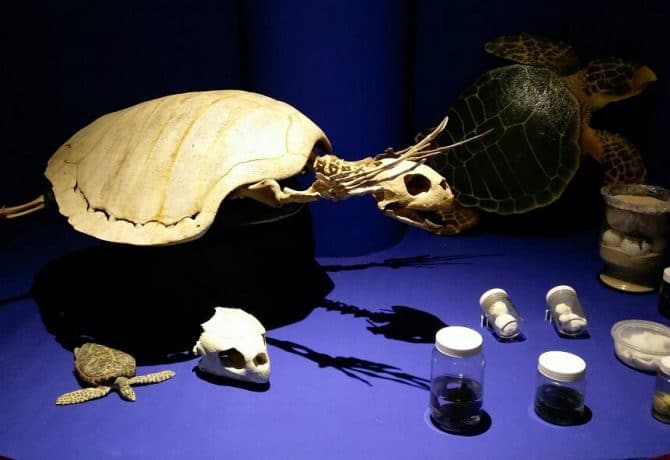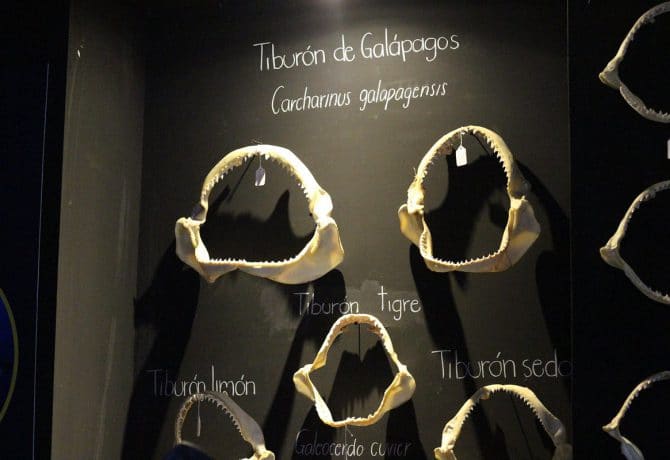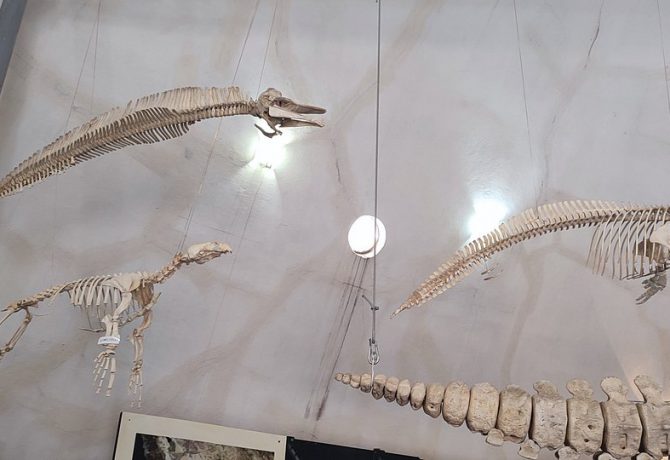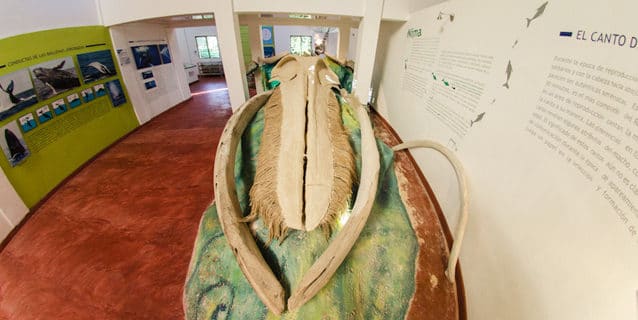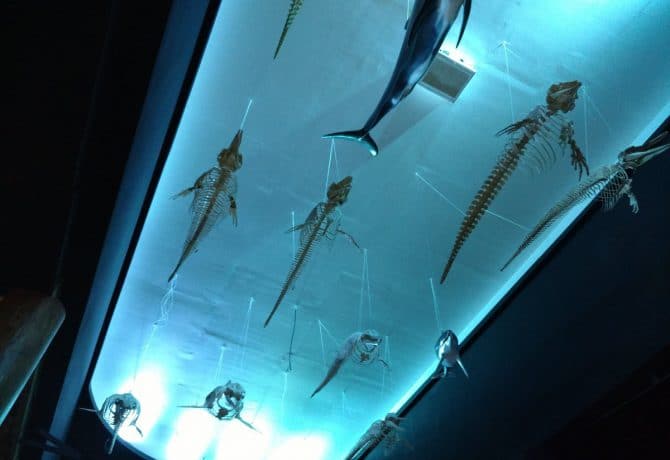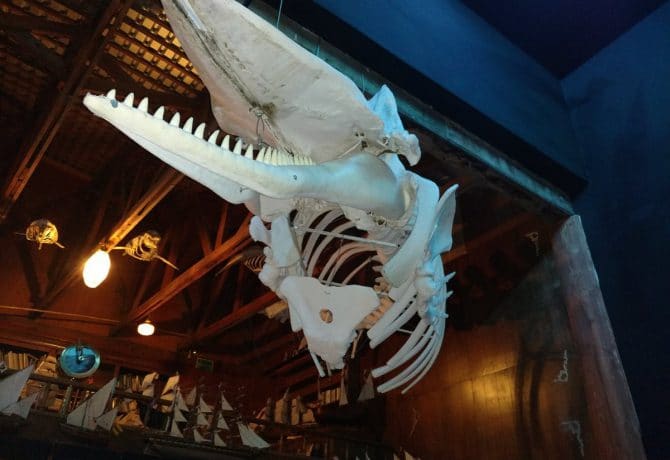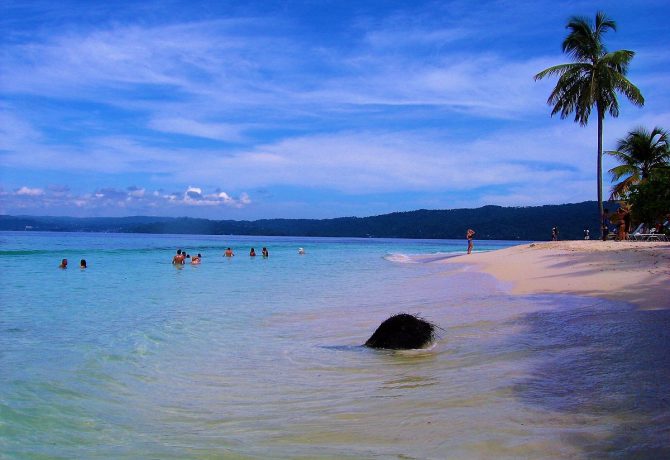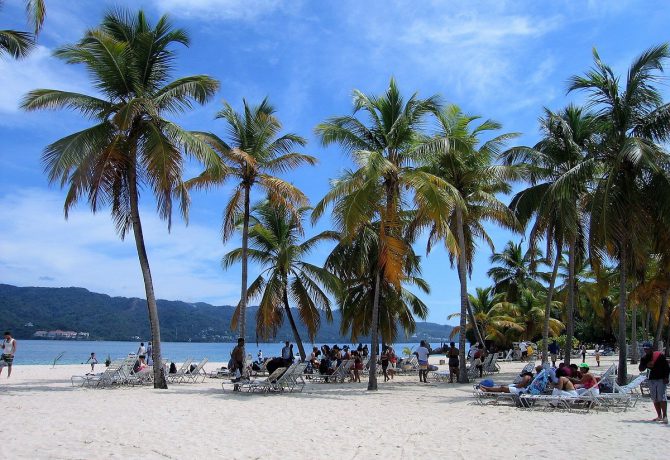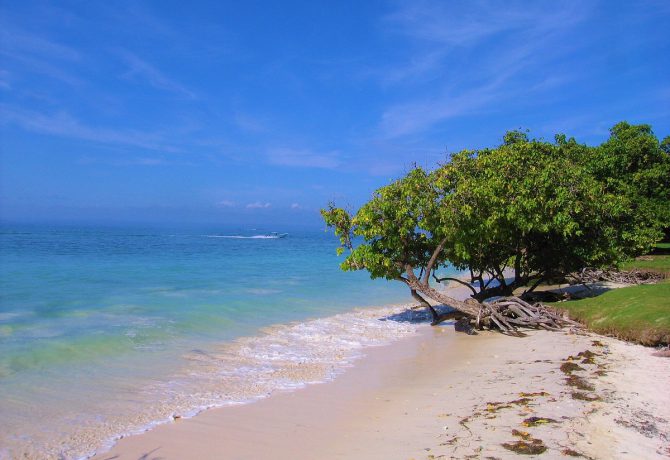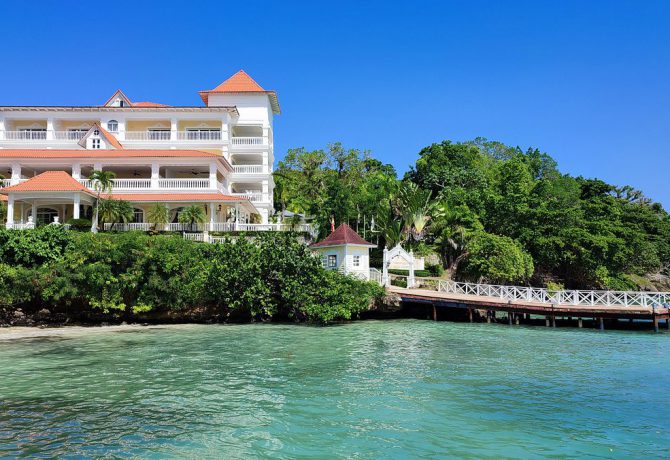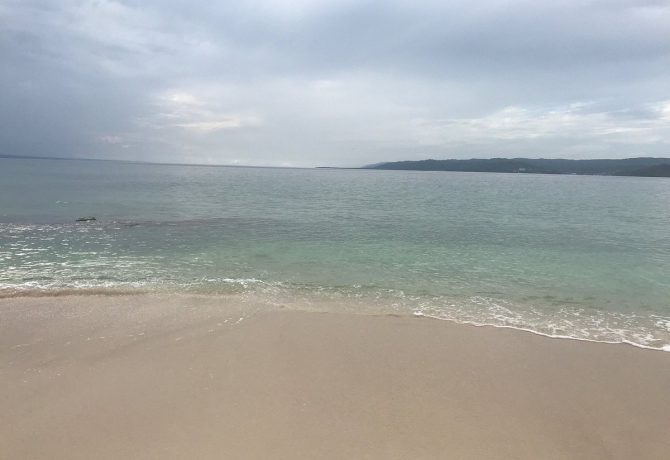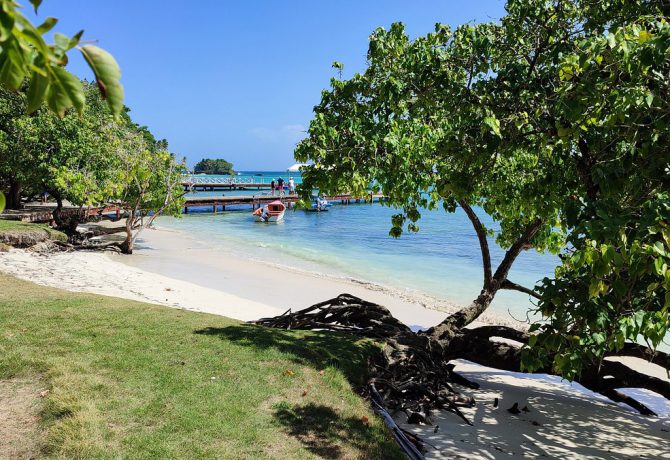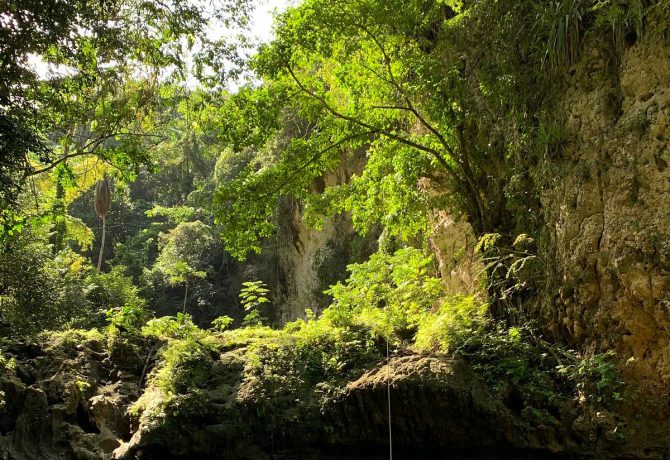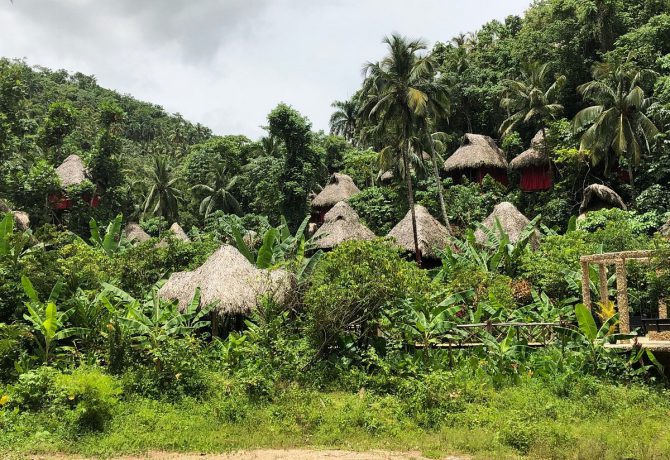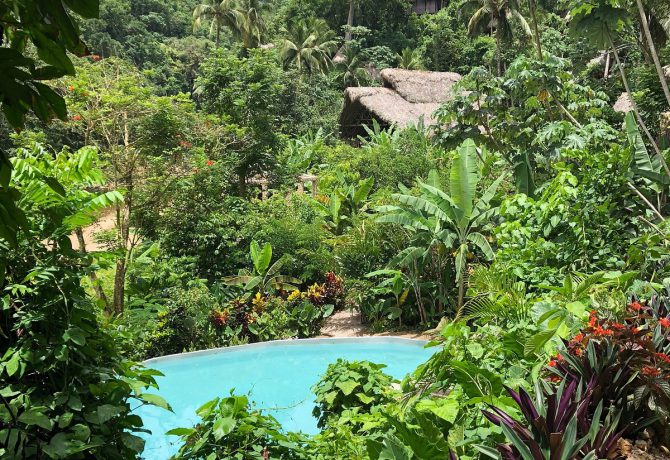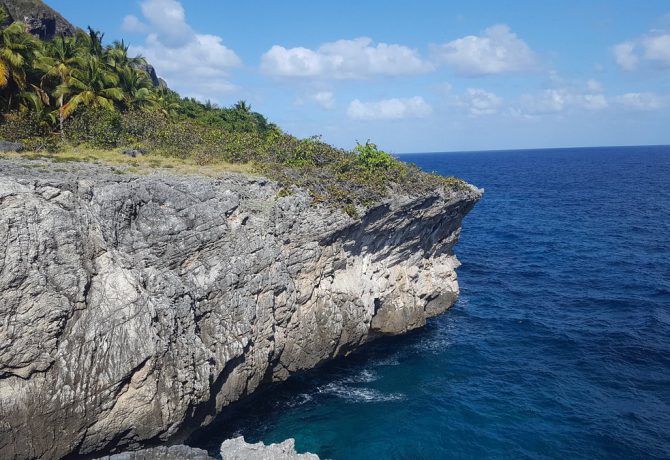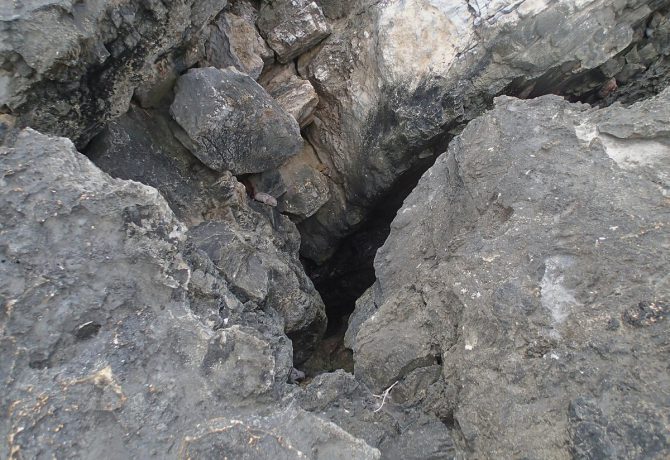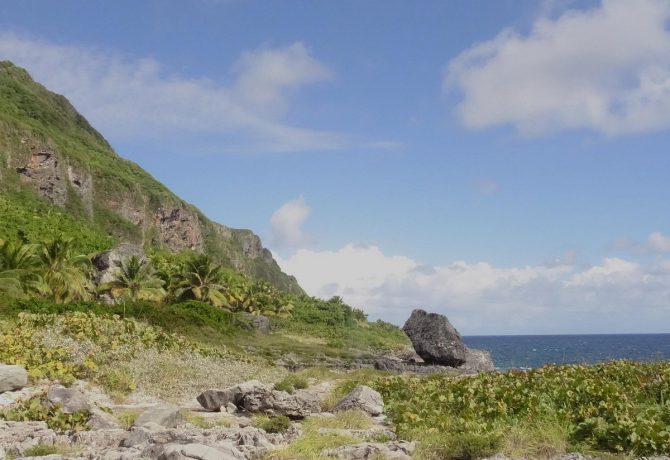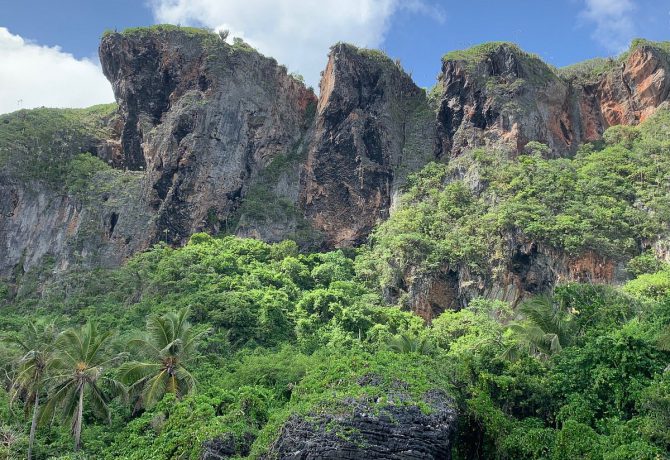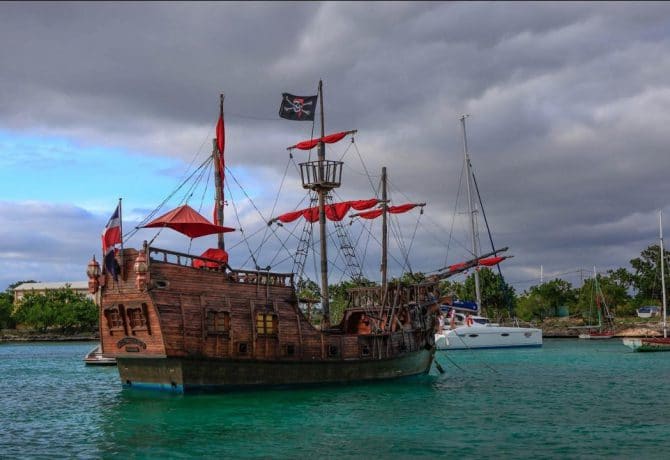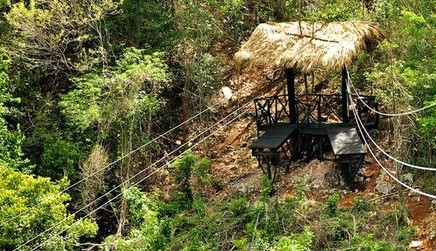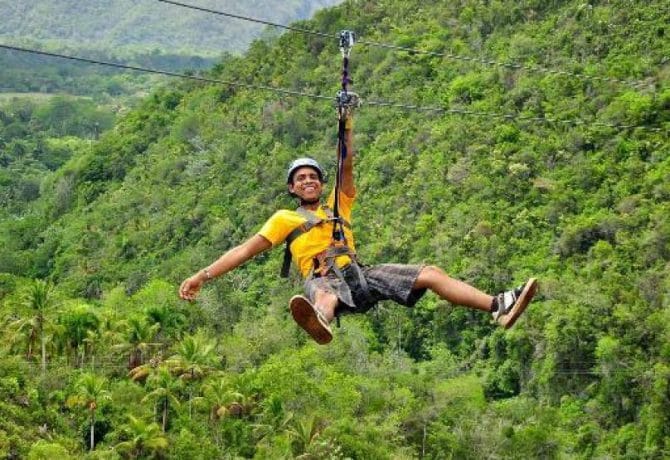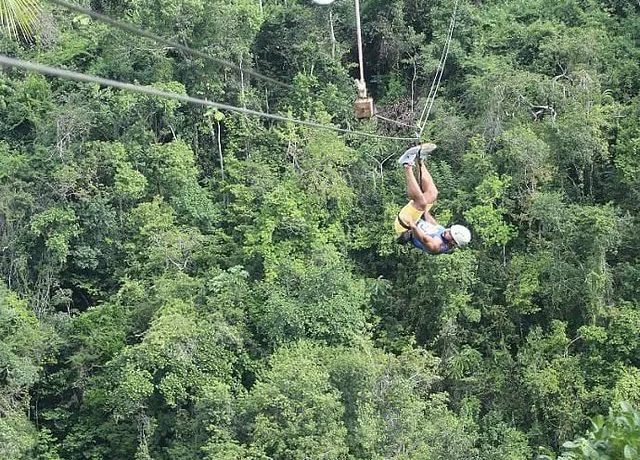Las Terrenas is a popular resort on the Samana Peninsula. The former fishing village remained abandoned until 1994. There was no electricity, and the main population consisted of the poorest residents of Saint-Domingue. They were moved here in 1949 to clean the capital of beggars and beggars. In Las Terrenas, they were engaged in agriculture and fishing, and since the mid-90s, the tourist infrastructure began to develop and the first hotels appeared.
From Saint-Domingue, it can be reached in 2 hours via the new toll motorway. Not far from Las Terrenas is the international airport “El Catey”. It receives flights from Europe and Canada. The resort is famous for its beaches. Seven magnificent beaches with amazing landscapes are ready to receive guests all year round, as well as villas and hotels located on their territory.
The resort has created an excellent tourist infrastructure. There is something to do both day and night. From entertainment are offered: fishing, scuba diving or snorkeling, boat trips, jeep safaris, horseback riding, excursions. Some hotels have their own tourist offices, but tours of attractions can be carried out independently.
There is no public transport in the city. Locals and tourists move only by car. For this reason, you can make your own route for a trip to the sights and visit the most interesting places of the Samana Peninsula. Our review is based on the popularity rating of objects with their coordinates.
Los Haitises National Park
Los Aitises Park is a pearl of pristine nature on the peninsula. It is under state protection and occupies 208 km2 of the southwest coast of Samana Bay. Unique flora and fauna have been preserved here, but it will not be possible to wander through the pristine jungle alone. At the entrance, excursion groups are formed, and led by a guide, they go to explore caves, uninhabited islands, mangroves and ritual temples of the Taino Indians.
Translated from the Indian Las Aitises means “high mountains”. Mountain peaks rise above the park, but the main attraction is thousands of islets. From the water-sharpened base, it seems that they are floating in the air. Researchers claim that a million years ago, this entire area was a seafloor. Then there was a shift in tectonic plates. A unique island was born, and the remains of prehistoric marine life are still found on its land.
The park is home to 130 species of birds, 13 of which are found nowhere else in the world. Mangroves are inhabited by crustaceans, fish, mollusks. 700 species of plants grow on the territory. The tour takes place both by water and by land. The guide will take the Taino Indians to the caves, tell about their rituals and beliefs. On the walls there are cave paintings made a thousand years ago. After the indigenous people were expelled and destroyed by the Spanish colonialists, the caves were chosen by pirates. They kept looted jewelry and other valuable goods here.
Website: http://haitises.com/
El Limon Waterfall
After Los Aitises National Park, you can drive to the village of El Limon. Here is the waterfall of the same name, which got its name because of the yellowish water. It is impossible to get to it by car, and on foot it is too tiring. For a person with average physical fitness, the transition will not be difficult (the length of the route is 2,200 m), but money will be saved for a guided tour. On the outskirts of the village there is a ranch on which excursion groups are formed. Tourists are sent along the route on horseback, accompanied by a guide. If an independent hike will cost $ 2 maximum (parking + entrance ticket), then for a horse and guide services you will have to pay another $ 30 on top.
El Limon is one of the three highest waterfalls in the Dominican Republic. Its height is 55 meters. Water collapses into the swing bowl in three streams. At the foot there is a lake in which tourists swim with pleasure. Locals do not recommend jumping into the water from the rocks. At the bottom there are many sharp rock ledges. Whether they are cunning or not is not known, but they themselves make virtuoso jumps for money.
Whale Museum
In 1999, the Museum dedicated to humpback whales was opened in the city of Santa Barbara de Samana. Every year tens of thousands of tourists come here to observe the migration of these huge marine mammals. Humpback whales migrate past the island from late January to early March. Visiting the museum will not take much time. It’s very tiny. The main exhibit – the skeleton of a whale – occupies almost its entire area. The exposition is based on the materials of scientific research on the life of humpback whales, as well as interesting facts collected about them.
The museum is located next to the pier for catamarans. The entrance ticket costs $ 3. There is a sign on the highway, so you will not be able to drive past. If the journey takes place in January, February or March, then you can combine it with a boat trip and watching the migration of whales.
Address: Avenida La Marina, Tiro al Blanco, Santa Barbara de Samana, Samana 32000
Website: https://samana.org.do/museo-de-las-ballenas/
Cayo Levantado Island (Bacardi)
If you want to watch the migration of whales from the hotel window, then you need to try to book a five-star Bahia Principe Luxury Cayo Levantado, built on the island of Cayo Levantado. This piece of land in the middle of The Bay of Samana is also called bacardi Island, because it was here that an advertisement for the famous rum was filmed. On its territory it is forbidden to settle local residents, tourists who do not live in the hotel, its infrastructure is not available. But it is to this hotel complex that the island owes its popularity.
Almost all hotels in the Dominican Republic are ready to offer excellent living conditions, but living on a desert island is a special exclusive. Complete privacy in the lap of nature is guaranteed here. The area of the island is only 1 km2. It can be circumvented in 10 minutes. Along the entire perimeter there are beaches. They are equipped with sun loungers, umbrellas, hammocks under palm trees. Guests themselves choose which view should open before their eyes: the vast expanses of the sea or the high mountains of Samana.
There are boats and boats on which you can get to the island to sunbathe on one of the island beaches. For visiting tourists are available: food and beverage delivery service, kayaking, snorkeling, souvenir shop, massage on the beach. You can get to the island from any coastal settlement of the Samana Peninsula.
Cascada Lulu – Waterfall
Not far from the beach of El Valle is a small but very picturesque waterfall Lulu. In the dry months, it dries up, but the stone lake still remains filled with water in which you can swim. Because of the purest and clearest water, the natural pool seems shallow. But this is a misleading impression. Do not swim in the pond, if before that there was no rain for several weeks. Stagnant water can cause irritation on the skin.
In the vicinity of the waterfall there is a suspension bridge and a very interesting lodge. Its number of rooms consists of houses in trees. On-site parking is available. Here they usually leave the car before going to the waterfall. A picturesque path leads to it. After visiting the attractions, you can stroll through the picturesque surroundings, as well as spend the night in an ECO hotel.
Boca del Diablo
The Devil’s Mouth is a crevice in the mountains at an altitude of 100 meters above sea level. It is located in Los Haitises National Park. At high tide, fountains of water splash out of the crevice, and whistling sounds and rumbles are heard from under the ground. Local guides offer tourists a game: if you throw a coconut into the crevice, then soon it will be thrown back by a stream of water. Some tourists throw stones. By doing so, they endanger themselves and others. No one knows where a discarded stone might fall. More well-mannered sightseers “feed” the Devil’s mouth with coins in the hope of returning to the Dominican Republic once again.
Pirate Park on the Samana Peninsula
The Samana Peninsula has been a haven for pirates in the Caribbean for several centuries. The organizers of the tourist infrastructure of the country could not but use this page of the history of Donimicana. They created a theme park of extreme entertainment in the valley of Santa Barbara (near the city of Samana, the rural community of Valle). It is easy to find and see from the highway. At an altitude of 122 m above sea level, a pirate ship with a black flag rises. This is the first of the 12 platforms of the cable car, as well as the entrance to the theme park.
The journey starts from the Valle community. There is a ticket office here, excursion groups are formed, to which guides are attached. Tourists are taken to the pirate ship on safari trucks. The path will pass along bumpy roads past the picturesque jungle. The first stop is near the dam of the San Juan River. A guest cottage has been built here, where travelers will be treated to fragrant cocoa and coffee. At the end of the trip, you can order the local exotic drink Mamajuana, which is prepared from rum, plant roots and mountain herbs.
Before the further trip, tourists receive equipment: a helmet, a life jacket, a safety cable and other safety accessories. The adventure begins aboard a pirate ship. Tourists are shown a small show, and then sent to fly over the jungle on a steel cable. This is the most interesting cable car in the Dominican Republic, which will have to be overcome with 12 stops.
Address: Cascada Lulu, Santa Barbara de Samana 00009, Dominican Republic
Zip Line
The largest zip line of the Dominican Republic consists of 13 platforms. All of them are interconnected by steel cables, along which tourists overcome the distances between the 12 stops. No need to be afraid to take children with you. The attraction is designed for people from 2 to 86 years old. The total length of the cable car is 2.5 km. This is the longest descent on the Caribbean coast. With the arrival at the lower station, the adventure does not end. Just a few meters from it there is a waterfall with a spacious stone pool at the foot. Tourists can swim and jump into the water from a cliff.
Next, the group goes down to the place where the truck stands. The guide invites you to visit another object, without which a visit to the Pirate Park will not be completed. It is an old fishing settlement and an abandoned beach. Here you can buy drinks, get a free portion of hot chocolate with a banana, a cup of coconut milk and a sip of invigorating rum. The cost of the tour is $ 105. The group is accompanied by an experienced instructor. He monitors the safety of sightseers, makes them fasten their seat belts in a safari truck, helps to put on a protective helmet correctly. The pirate park with the most interesting zip line is open from Wednesday to Monday from 09:00 to 16:00. Tuesday is a day off.
Upon returning to Las Terrenas, it is not necessary to go to bed right away. Hotels hold shows in the evenings, and after midnight the doors of nightclubs open. For a small resort, the entertainment infrastructure is decently developed here. Here you can dance, gamble, order a romantic dinner under the stars right on the beach. If you want new sensations, then in the morning you can go to the helipad and book an air tour over the Samana Peninsula.

